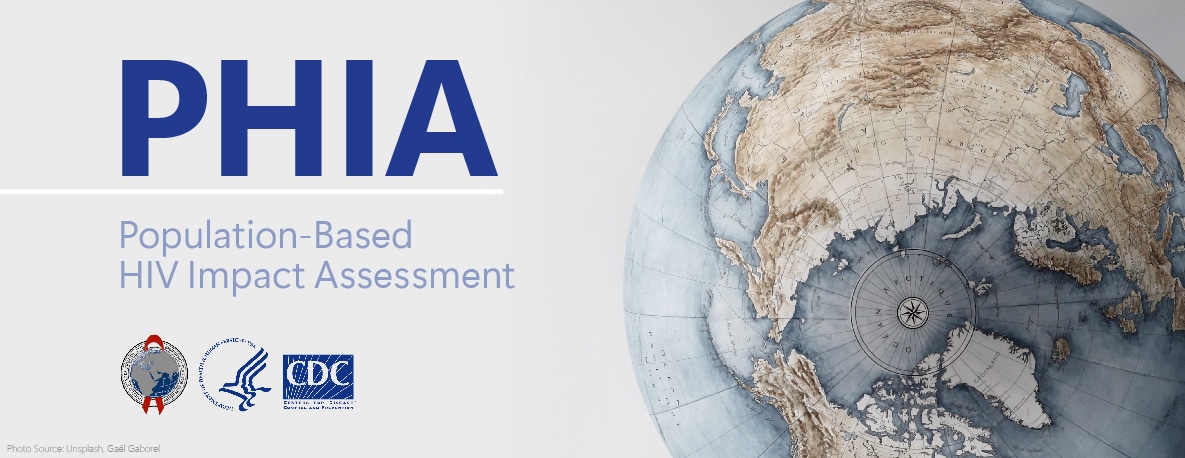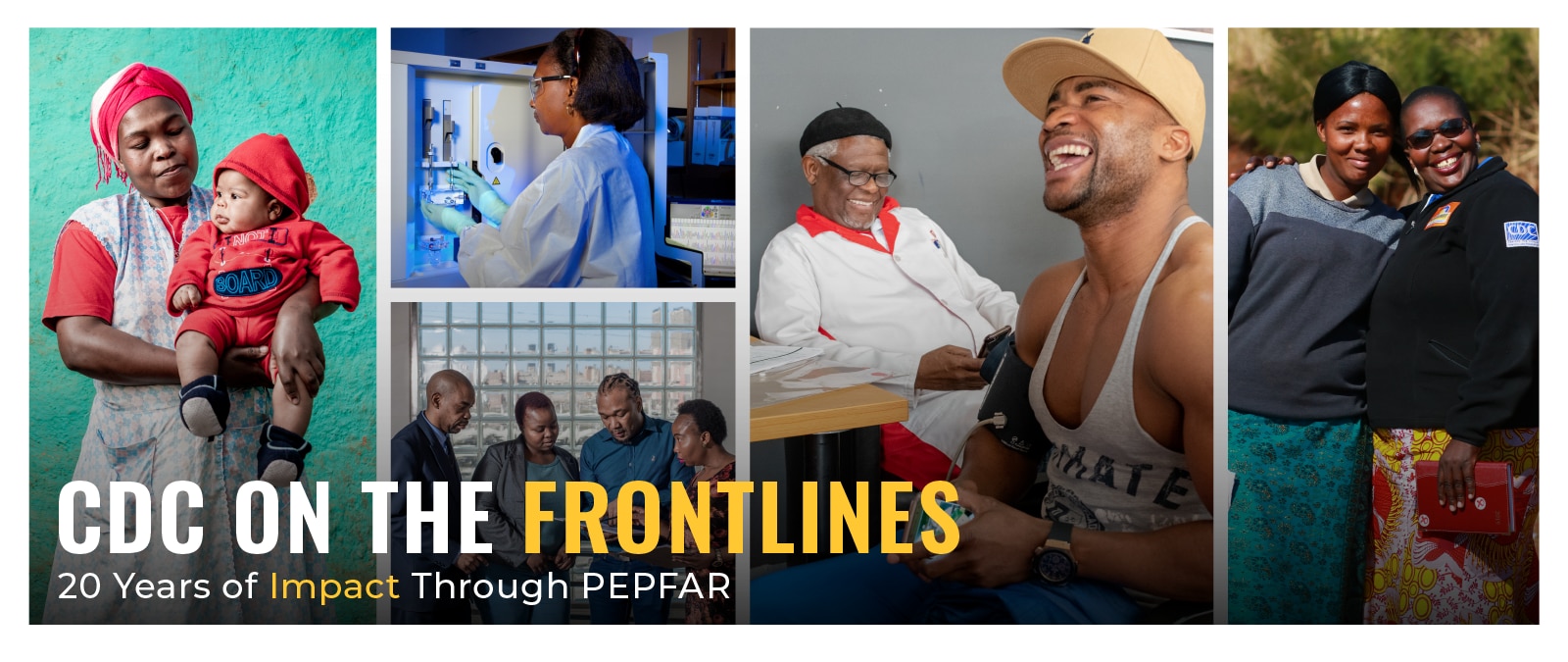Namibia Country Profile

Namibia Country Profile
Discover more about CDC’s work in Namibia by viewing our detailed country profile
Country Overview
CDC established its office in Namibia in 2002 and supports the Namibian Ministry of Health and Social Services to develop and implement an integrated, comprehensive package of HIV prevention, care, and treatment programs. Significant portions of CDC’s work with the Ministry is focused on building workforce capacity to ensure adequate availability of skilled public health professionals and on strengthening laboratory systems to scale-up and improve HIV and tuberculosis diagnostics and viral load testing. CDC also provides technical assistance to enhance disease surveillance and health information systems to collect and analyze data for improved program decision-making. CDC works with the Ministry to expand national antiretroviral treatment programs and improve HIV prevention efforts focusing on adolescent girls and young women, voluntary medical male circumcision for men, and prevention of mother-to-child transmission of HIV for pregnant women.
Per Capita GNI
$4,880
(2022)
Population (million)
2.56
(2022)
Under 5 Mortality
39/1,000 Live Births
(2021)
Life Expectancy
59.3 Years
(2021)
Estimated HIV Prevalence
11%
(Ages 15-49): (2022)
Estimated AIDS Deaths
2,800
(Age≥15) (2022)
TB Treatment Success Rate
88%
(2020)
Estimated TB Incidence
457/100,000
(2021)
Estimated Orphans Due to AIDS
52,000
(2022)
TB patients with known HIV-status who are HIV-positive
30%
(2021)
Reported Number Receiving Antiretroviral Therapy (ART)
191,563
(Age≥15) (2022)
Strategic Focus
The Centers for Disease Control and Prevention (CDC) Namibia office, established in 2002, has satellite offices in Zambezi, Kavango East, and Oshana regions to help implement key HIV programs in these high HIV burden regions. The CDC team works with the Ministry of Health and Social Services (MOHSS) to build health system capacity and implement HIV programs, particularly in the areas most affected.
Building Workforce Capacity: CDC works with the MOHSS to ensure adequate supply of skilled medical health professionals, as well as monitoring and evaluation officers, and has helped to strengthen mentoring of clinical staff.
Strengthening Laboratory Systems: The Namibia Institute of Pathology (NIP) is receiving CDC technical support to provide accurate HIV diagnostics and timely viral load (VL) testing. As Namibia continues to decentralize services and works towards reaching the target of 95% of all individuals on antiretroviral treatment (ART) maintaining VL suppression, a strong lab system and network is critical. CDC also works with NIP to ensure the quality of all HIV and Tuberculosis (TB) testing nationally.
Strengthening Surveillance and Health Information Systems: CDC continues to provide technical assistance to build capacity to collect and analyze data for improved program decision-making.
Key Activities and Accomplishments
Scale Up of ART Program: CDC Namibia supports MOHSS to implement “treat all” and immediate linkage to treatment. This program has been successfully rolled out nationwide and 2017 program data shows 60% of patients being linked to treatment on the same day as testing.
Improved HIV Prevention: In 2017, Namibia was designated a Determined Resilient Empowered AIDS free Mentored Safe (DREAMS) country and CDC is rolling out this program in selected districts. This package supplements prevention activities supported by CDC Namibia that includes Voluntary Medical Male Circumcision (VMMC) and the successful prevention of mother-to-child transmission program.
Strengthened Health Systems: CDC supported MOHSS to strengthen the health system through improving access to HIV services by hiring doctors, nurses, clinical mentors, and other key staff. This supports the decentralization of ART services and implementation of innovative community-based ART models. CDC supports the weekly use of the Extension for Community Healthcare Outcomes (Project ECHO) platform as an effective means of building expertise in the country. Namibia’s Project ECHO, the first of its kind in Africa, is an internet-based platform that connects remote sites to specialists and empowers healthcare providers with advanced skills to treat patients with complex diagnoses.
Data to inform decisions: CDC provided support for the first Namibia Population-based HIV Impact Assessment (NAMPHIA).Results from NAMPHIA show that 77 percent of all HIV-positive adults have achieved VL suppression, surpassing the Joint United Nations Programme on HIV/AIDS (UNAIDS) target of 73 percent by 2020. Compared with the UNAIDS 2012 estimates, Namibia has reduced its adult HIV incidence rate by 50 percent in the past five years. Namibia has made this tremendous progress by either reaching or exceeding the UNAIDS 90-90- 90 targets among women and, nationally, by attaining 86-96-91 among adults. Namibia accomplished this through the strategic expansion of HIV prevention and treatment services, with a focus on VL suppression at the individual and community level, and the swift implementation of forward-leading HIV policies.
CDC also supports research at regional levels to provide insight into location specific challenges. CDC supported the implementation of the first Integrated Bio-Behavioral Surveillance Survey (IBBSS) and is supporting MOHSS to conduct a second IBBSS; results provide information on HIV prevalence, behaviors driving the epidemic, and population size estimation. CDC is also supporting the implementation of the first-ever TB prevalence study in Namibia.
Technology: CDC procured point of care VL testing machines and printers that receive input via text message for facilities throughout the country. These technologies reduce the turnaround time for test results. A text message printer reduces delivery time of test results from an average of 5 days to 1 day.
Addressing TB: CDC supports comprehensive TB/HIV activities in Namibia, including improving and integrating TB and HIV services for co-infected individuals, providing isoniazid preventative therapy for all eligible HIV-positive individuals, and supporting TB infection control efforts in healthcare facilities.

Tracking PEPFAR Impact Toward Global Targets
The U.S. Centers for Disease Control and Prevention (CDC) works with partners including host countries, local implementing partners, faith-based organizations, and other community-based organizations to measure progress towards HIV epidemic control in countries supported by the U.S. President’s Emergency Plan for AIDS Relief (PEPFAR).

Adapting HIV treatment: How PEPFAR-supported countries sustained HIV services during a pandemic
Despite advancements over several decades in the global HIV response, the onset of the COVID-19 pandemic introduced new challenges and threatened hard-won gains. Restriction to movement and other measures implemented to mitigate the spread of COVID-19 posed a challenge for HIV testing, treatment, and prevention services offered in healthcare settings.

CDC On the Frontlines
Over the past 20 years, the U.S. President’s Emergency Plan for AIDS Relief (PEPFAR) has saved millions of lives as a leader in the global response to two of the world’s deadliest infectious diseases – HIV and TB. As a key implementing agency of the U.S. President’s Emergency Plan for AIDS Relief (PEPFAR), CDC is at the forefront of these global efforts to treat and prevent these diseases.